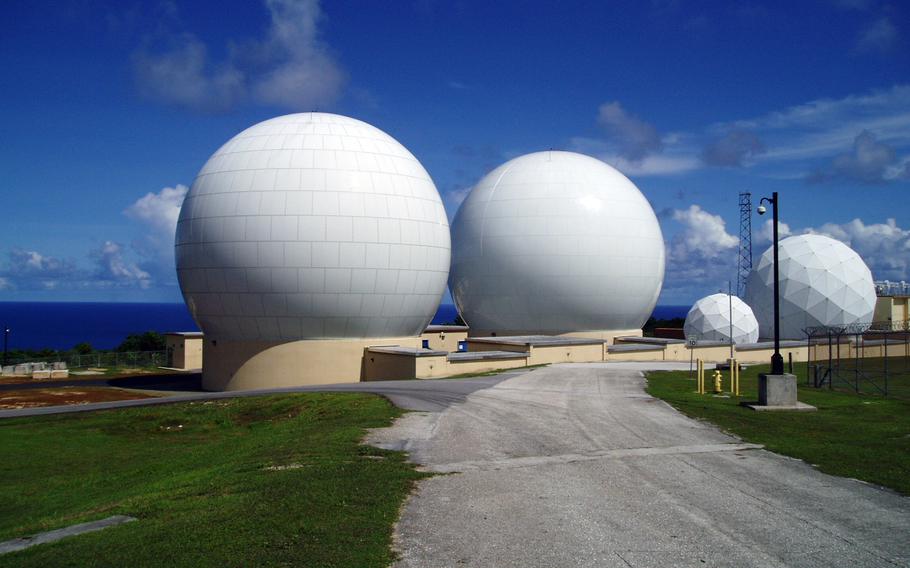
Neither the Navy nor Joint Region Marianas responded to questions regarding the extent of typhoon damage to the Naval Computer Telecommunications Station, seen here in July 1998, or the cost to repair it. (NASA)
A critical military telecommunications facility on Guam withstood Typhoon Mawar last month with only “cosmetic damage,” a spokeswoman for Joint Region Marianas said Friday.
Neither the Navy nor Joint Region Marianas responded to questions regarding the extent of damage to the Naval Computer Telecommunications Station or the cost to repair it.
Mawar tore into Guam, an island about the size of Chicago, on May 24 with 150 mph winds and 2 feet of rain in some places, making it the strongest storm to strike the U.S. territory since 2002.
Wind gusts apparently stripped away several distinctive, golf ball-shaped communications dish covers at the telecommunications station in northwest Guam, Leland Bettis, director of the Guam-based Pacific Center for Island Security, said in a June 10 email to Stars and Stripes.
A spokeswoman for Joint Region Marianas, which provides management support to U.S. military bases on the island, said the telecommunications facility withstood the typhoon with only minor damage.
Despite visible cosmetic damage to the command facilities, NCTS Guam maintained its mission-critical services with added support from other Navy commands, spokeswoman Catherine Norton said in an email Friday.
The Guam station provides “multi-spectral connectivity, network operations and information assurance to Navy, joint and coalition forces in … the U.S. 3rd, U.S. 5th, and U.S. 7th Fleet areas of responsibility,” an area that stretches from the Eastern Pacific to the Middle East, according to the command’s website.
The station provides “continuous global and universal communications services to fleet units, shore activities, and joint forces,” according to GlobalSecurity.org.
The facility is next to Marine Corps Base Camp Blaz and a short drive from Andersen Air Force Base.
“NCTS Guam is crucial to the western Pacific's communications infrastructure, providing critical communication and network services to the Joint Region,” Norton said.
The station prepared for potential damage and connectivity issues as the typhoon approached Guam, she said.
“The station took preemptive measures, such as shifting critical services to other communications stations, securing nonessential equipment, testing generators, verifying emergency fuel tanks, and conducting pre-storm checks on all infrastructures and systems,” she said.
The station’s commander said it remained operational throughout the ordeal.
"After personnel safety, maintaining operations was our top priority,” Navy Cmdr. Jim Nelson said in comments emailed by Norton.
"The dedication and professionalism of the NCTS Guam personnel ensured Joint Region Marianas and Task Force West never lost the ability to command and control forces and aided to the island's quick recovery,” Nelson said.